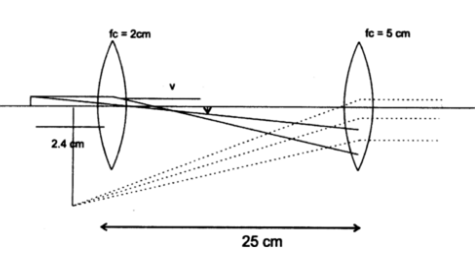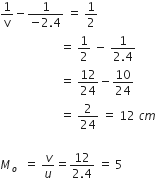
Given,
f0 = focal length of the objective = 2 cm
fe = focal length of the eye pieces = 5 cm
Me = Magnification of the eye pieces
Mo = Magnification of the objective
Me = 1 +  =
= 
For the objective,
u = -2.4 cm, v = ? and fo = 2 cm
M = magnifying power of the compound microscope.
M = M0 x Me = 5 x 6 = 30, is the required magnification.
